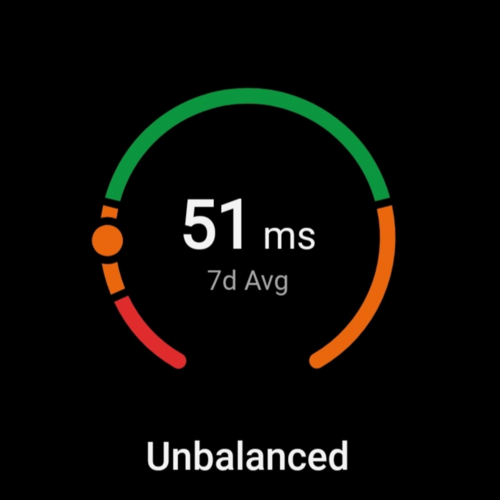And how to improve it!
With the rise of wearable devices that help track your sleep, steps and activity, you might have come across HRV or Heart Rate Variability. We thought it would be a good time to explain a little bit more about this in this short blog post.
What is it?
Heart rate variability (HRV) refers to the variation in time intervals between consecutive heartbeats. It's a measure of the subtle changes in heart rate that occur in response to internal and external stimuli. HRV is regulated by the autonomic nervous system (ANS), which controls involuntary bodily functions such as heart rate, digestion, and respiratory rate.
High HRV indicates a healthy autonomic nervous system and greater adaptability to stressors, while low HRV is associated with various health issues and reduced ability to cope with stress. HRV analysis is used in medical research and clinical practices to assess autonomic function, cardiovascular health, and stress levels. It's also increasingly used in wearable fitness devices and wellness apps for tracking overall health and fitness.
When your HRV drops lower than normal, you are either over-training, ill (or about to get ill), or stressed. It is recommended to reduce your training and take some R&R (rest and recovery).
How can you elevate or improve your HRV?
Improving heart rate variability (HRV) involves strategies to enhance the functioning of your autonomic nervous system (ANS) and reduce stress levels. Here are some techniques that may help:
1. Regular Exercise: Engaging in aerobic exercise like running, swimming, or cycling can improve overall cardiovascular health and increase HRV. Aim for at least 150 minutes of moderate-intensity exercise per week.
2. Mindfulness and Meditation: Practices like mindfulness meditation, deep breathing exercises, and progressive muscle relaxation can help reduce stress and improve ANS function, leading to increased HRV.
3. Yoga and Tai Chi: These mind-body practices combine physical movement, breath control, and meditation, promoting relaxation and enhancing ANS balance, which can lead to improved HRV.
4. Healthy Sleep: Prioritize getting enough high-quality sleep each night. Poor sleep quality and insufficient sleep can negatively impact HRV.
5. Stress Management: Identify sources of stress in your life and develop strategies to manage them effectively. This may include time management techniques, setting boundaries, and practicing self-care activities.
6. Balanced Diet: Eating a nutritious diet rich in fruits, vegetables, whole grains, lean proteins, and healthy fats supports overall health and can positively influence ANS function and HRV.
7. Hydration: Stay adequately hydrated throughout the day, as dehydration can affect heart function and HRV.
8. Social Connections: Cultivate strong social connections and spend time with supportive friends and family members. Positive social interactions can help reduce stress and improve overall well-being, potentially enhancing HRV.
9. Biofeedback Therapy: Some individuals find biofeedback therapy helpful for improving HRV. This technique involves using electronic monitoring to provide real-time feedback on physiological processes like heart rate, helping individuals learn to control these processes through relaxation techniques.
10. Limit Stimulants: Minimize consumption of stimulants such as caffeine and nicotine, as they can increase heart rate and potentially reduce HRV.
11. Cold exposure: Even though this inflicts a short term stress response, overall it will improve your parasympathetic activity and elevate your HRV on the long term.
12. Trans-cutaneous vagal nerve stimulation. New research has emerged demonstrating that you can stimulate a branch of the vagus nerve on the inside of your tragus via TENS. Special ear clips are required. Any of our practice members are happy to help if you have any questions.
Remember that individual responses to these strategies may vary, so it's essential to find what works best for you through experimentation and consistency.

